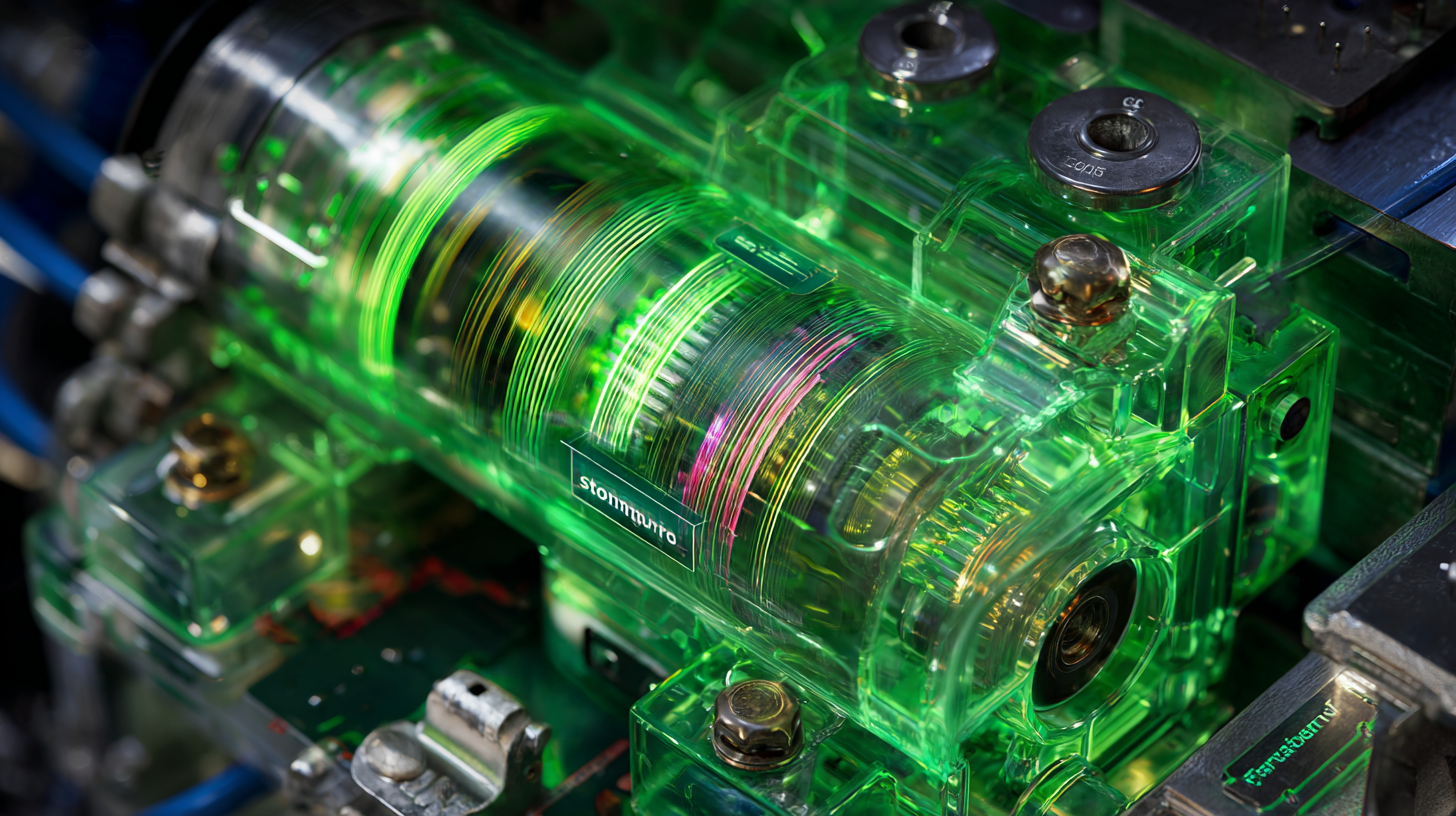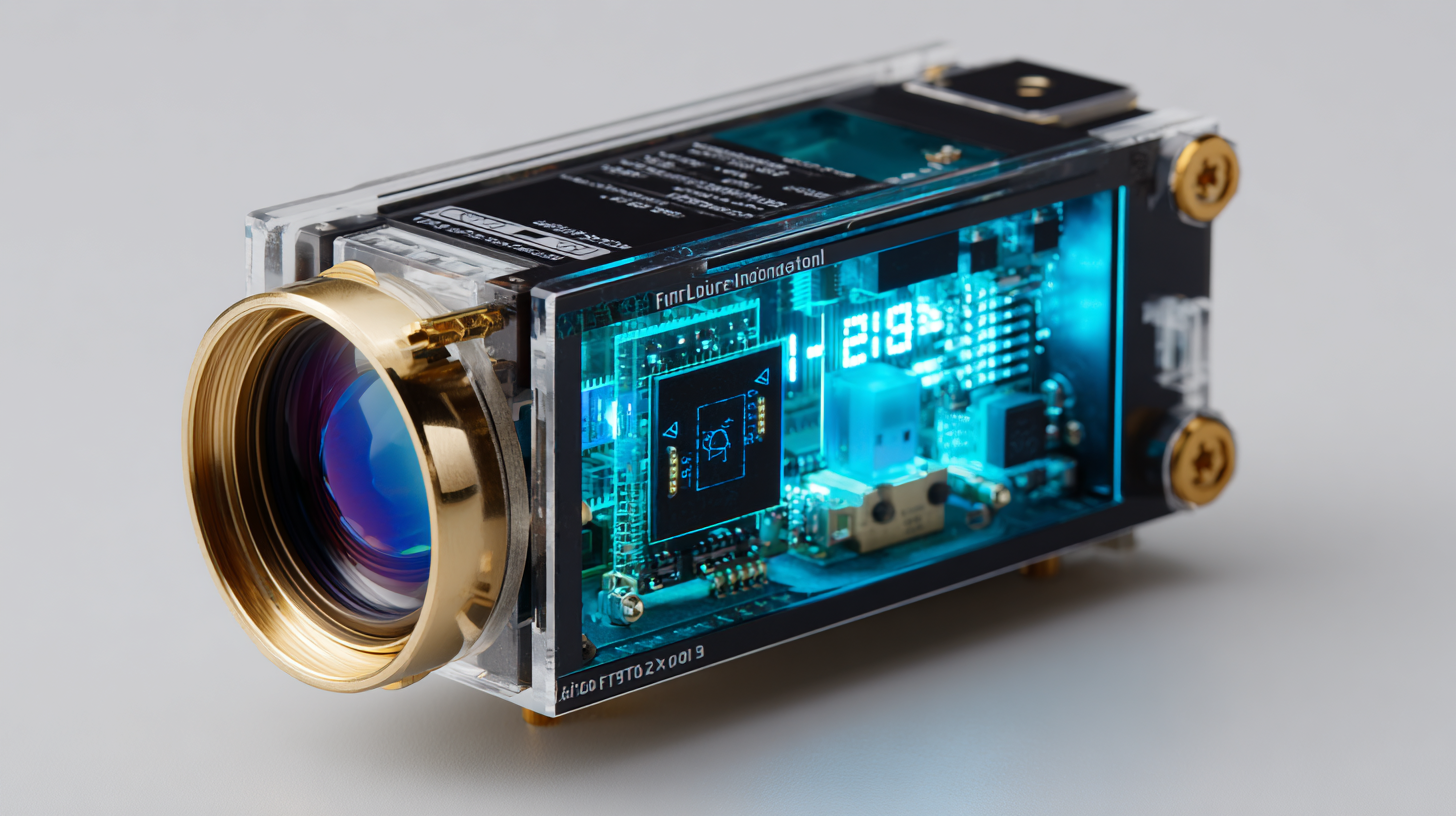Services
Future Innovations in Best Fluoro Image Intensifiers Shaping 2025 Industry Trends
As the medical imaging industry continues to evolve, the role of Fluoro Image Intensifiers is becoming increasingly pivotal in enhancing diagnostic capabilities. According to the latest market research report by Grand View Research, the global fluoroscopy market is expected to reach approximately $5.7 billion by 2025, driven by advances in imaging technology and an increase in the prevalence of chronic diseases.
 This growth is largely attributed to innovations in Fluoro Image Intensifiers, which not only improve image quality but also reduce patient exposure to radiation. Major players in the industry are investing in research and development to create more compact, efficient, and user-friendly designs, setting the stage for transformative changes in the field.
By examining the trends and advancements expected in 2025, this blog will explore how these cutting-edge innovations in Fluoro Image Intensifiers are shaping the future of medical imaging.
This growth is largely attributed to innovations in Fluoro Image Intensifiers, which not only improve image quality but also reduce patient exposure to radiation. Major players in the industry are investing in research and development to create more compact, efficient, and user-friendly designs, setting the stage for transformative changes in the field.
By examining the trends and advancements expected in 2025, this blog will explore how these cutting-edge innovations in Fluoro Image Intensifiers are shaping the future of medical imaging.
Challenges Facing Current Fluoro Image Intensifiers in the Market
The market for fluoro image intensifiers is facing several significant challenges that could impact future innovations. One of the primary issues is the increasing demand for high-definition imaging in medical and industrial applications. Current fluoro image intensifiers often struggle to keep up with the rigorous demands for clarity and detail, which can hinder diagnosis and quality of analysis. Manufacturers must adapt their technologies to produce equipment that meets these high standards.
In addition to technological limitations, there are financial constraints that affect the development of new fluoro image intensifiers. The cost of research and development is rising, and many companies may find it difficult to allocate sufficient resources to innovate further. It is crucial for stakeholders to modernize their funding strategies and pursue partnerships that can alleviate some of these financial burdens.
**Tip:** Emphasizing collaboration between manufacturers and research institutions can drive innovation and problem-solving, addressing the technical barriers faced in the industry.
Another challenge is regulatory compliance, as evolving standards may introduce hurdles that manufacturers must navigate carefully. To stay competitive, companies need to be proactive in understanding these regulations and adjusting their processes accordingly.
**Tip:** Regular training and updating of staff about regulatory changes can streamline compliance efforts and keep the organization agile amidst shifting industry landscapes.
Future Innovations in Best Fluoro Image Intensifiers Shaping 2025 Industry Trends
This chart illustrates the projected advancements and challenges facing fluoro image intensifiers by 2025, highlighting key areas such as resolution, sensitivity, and cost efficiency.
Impact of Technological Advancements on Fluoro Image Quality and Performance
As we look towards 2025, the landscape of fluoroscopic image intensifiers is set to undergo significant transformations driven by technological advancements. The quality of fluoroscopic images is crucial for accurate diagnostics, and innovations in imaging technologies promise to enhance image clarity while reducing noise. This shift is particularly important as the healthcare industry grapples with increasing demands for medical imaging efficiency.
Tips: One way institutions can improve image quality is by adopting advanced imaging features found in modern mobile C-arm systems. These devices have evolved substantially, providing superior image quality and faster processing times. Moreover, integrating AI-based image reconstruction technologies can further optimize image clarity, ensuring that radiologists have the best visual data at their disposal.
Additionally, the introduction of photon-counting CT technology represents a leap forward in tissue characterization and noise reduction. These advancements not only improve the diagnostic capability of imaging systems but also streamline workflows, allowing radiologists to work more efficiently and effectively. By leveraging these innovations, healthcare facilities can position themselves at the forefront of radiology, enhancing both patient care and operational productivity.
Emerging Innovations to Address Limitations in Fluoro Imaging Systems
The landscape of fluoroscopic imaging is on the brink of transformation as emerging innovations are set to address long-standing limitations within current systems. One of the critical challenges in fluoroscopy is the balance between image quality and patient exposure to radiation. Cutting-edge technologies, such as advanced digital detectors, are being developed to enhance image clarity while significantly reducing the dose of radiation administered to patients.
 These innovations promise to provide healthcare professionals with better diagnostic tools, ensuring patient safety remains a priority.
These innovations promise to provide healthcare professionals with better diagnostic tools, ensuring patient safety remains a priority.
Additionally, artificial intelligence (AI) is making waves in the field of fluoro imaging. By integrating AI algorithms, systems can now analyze and interpret images with remarkable speed and accuracy, assisting radiologists in detecting abnormalities more efficiently. This not only reduces the likelihood of human error but also streamlines the workflow in busy clinical settings. As we approach 2025, the convergence of high-definition imaging and intelligent analysis is expected to redefine the standards of fluoro imaging, leading to more precise interventions and improved patient outcomes.
Regulatory and Compliance Issues Affecting Fluoro Image Intensifier Development
As the landscape of fluoroscopy technology evolves, regulatory and compliance issues play a critical role in shaping the development of fluoro image intensifiers. Regulatory bodies are increasingly emphasizing the importance of safety standards and image quality, which aligns with recent advances in X-ray imaging technology. According to industry reports, the integration of digital imaging has reduced radiation doses by up to 30%, enhancing patient safety while ensuring high-quality diagnostics. However, manufacturers must navigate complex regulatory frameworks that can delay the introduction of innovative products to the market.
To ensure compliance, manufacturers should prioritize the implementation of robust quality management systems that adhere to industry regulations and guidelines. Regular training for staff on regulatory updates can keep teams informed and prepared for evolving standards.
Another critical aspect involves maintaining transparency with regulatory agencies throughout the development process. By engaging with these bodies early on, companies can gain insights into compliance expectations while potentially accelerating approval timelines, enabling them to bring groundbreaking technologies to market more efficiently.
**Tips:**
1. Stay informed about the latest regulatory changes to preemptively address compliance issues.
2. Foster partnerships with industry experts to better navigate complex regulatory requirements.
3. Invest in training programs for personnel to ensure a collaborative approach towards meeting compliance standards.

Future Trends: Anticipating User Needs and Preferences in 2025
As we look toward 2025, understanding user needs and preferences will be pivotal for driving innovations in fluoro image intensifiers. A recent market analysis by Research and Markets predicts that the global fluoro image intensifier market will reach $1.2 billion by 2025, driven by advancements in digital imaging technology and the rising demand for high-quality imaging in medical and industrial applications. This growth indicates that user expectations have shifted towards more efficient, compact, and robust imaging solutions.
Moreover, emerging trends suggest that customization and user-friendly interfaces will play a significant role in shaping product offerings. According to a survey conducted by Frost & Sullivan, 62% of healthcare professionals reported a preference for image intensifiers that incorporate smart technology, enabling seamless integration with existing systems. As companies focus on developing innovative features such as enhanced digital connectivity and improved imaging capabilities, meeting these user-centric demands will be key to capturing market share and fostering customer loyalty in a competitive landscape.
